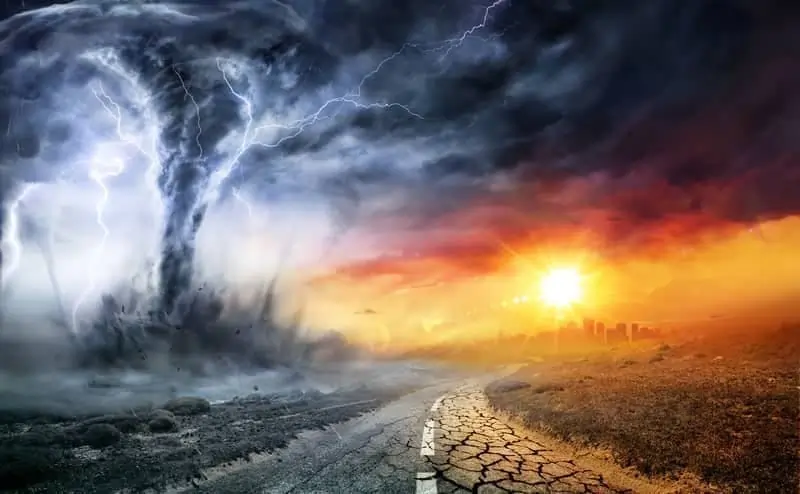Natural disasters have always been an unpredictable and destructive force, but as we move toward 2025, the frequency and intensity of these events are expected to increase. Climate change, urbanization, and environmental degradation have all contributed to the vulnerability of communities across the globe. This article explores the projected natural disasters of 2025, the importance of preparation, and the global efforts being made to mitigate their effects.
The Impact of Natural Disasters in 2025
In 2025, we can expect an uptick in natural disasters, with extreme weather events such as hurricanes, floods rarecareer.com, wildfires, and earthquakes becoming more frequent. The effects of climate change will be evident in the rise of ocean temperatures and more erratic weather patterns, leading to powerful storms and flooding in regions that have not historically been vulnerable. Wildfires, which have already been devastating parts of the world, are projected to worsen due to prolonged droughts and higher temperatures.
Natural disasters in 2025 may also manifest in new ways, as regions not traditionally affected by certain events begin to experience them. For example, areas that have seen a steady increase in rainfall could face more frequent and severe flooding, while others may experience stronger tornadoes or landslides. As the world continues to urbanize, densely populated cities will be at higher risk from these disasters, making preparedness and response efforts even more critical.
Climate Change and Its Role in Natural Disasters
One of the primary drivers of natural disasters in 2025 will be climate change. Rising global temperatures have already led to shifts in weather patterns, with more extreme events expected in the coming years. The consequences of global warming are expected to escalate, influencing the occurrence of floods, hurricanes, and heatwaves. Additionally, glaciers are melting at an accelerated rate, contributing to rising sea levels, which puts coastal cities at greater risk of flooding and storm surges.
In 2025, we may also witness changes in ecosystems due to the effects of natural disasters. Droughts and storms will disrupt food and water supplies, leading to more widespread food insecurity. The increase in wildfires, worsened by high temperatures and dry conditions, will not only destroy homes but will also impact biodiversity and the livelihoods of local communities.
The Importance of Disaster Preparedness
As the risk of natural disasters in 2025 increases, it is essential for governments, communities, and individuals to prioritize disaster preparedness. Early warning systems are critical in reducing the impact of these events, allowing people to evacuate and prepare in advance. In many cases, these systems rely on advanced technology and data analysis to predict storms, earthquakes, and other hazards before they strike.
Furthermore, communities must develop resilient infrastructure that can withstand the forces of nature. In flood-prone areas, for example, building levees, dams, and flood barriers can help protect vital infrastructure. Similarly, in earthquake-prone regions, retrofitting buildings to make them more earthquake-resistant is a key measure in minimizing damage. Urban planning must take these risks into account and incorporate sustainable practices to ensure that cities can endure the harshest conditions.
For individuals, disaster preparedness means having an emergency kit with essentials like food, water, and medical supplies, as well as knowing evacuation routes and emergency contacts. Schools, businesses, and other institutions should also implement regular drills to ensure everyone knows how to react when disaster strikes.
International Efforts to Mitigate Natural Disasters
While natural disasters are an inevitable part of life, global efforts to reduce their impact have made significant strides in recent years. In 2025, there is likely to be greater cooperation among nations to address the challenges posed by these events. The United Nations Office for Disaster Risk Reduction (UNDRR) has been instrumental in advocating for disaster resilience and sustainability, urging governments to develop plans that address both the causes and effects of natural disasters.
Another key area of international collaboration is in the realm of scientific research. By sharing data and advancements in technology, countries can work together to improve disaster prediction, preparedness, and response. For example, satellite technology is being used to monitor environmental changes and track storms in real-time, allowing for better-informed decisions and timely evacuations.
Additionally, financial assistance for disaster recovery is a critical part of international efforts. Countries affected by devastating natural disasters often struggle to rebuild without external aid, and international organizations such as the World Bank and the Red Cross provide vital funding and resources. In 2025, it is expected that more robust mechanisms for disaster relief and recovery will be in place, ensuring that communities affected by natural disasters can rebuild faster and more effectively.
The Role of Individuals in Reducing the Impact of Natural Disasters
While global and governmental efforts are crucial, individuals also play a significant role in reducing the impact of natural disasters in 2025. By adopting more sustainable lifestyles, people can help mitigate some of the underlying causes of climate change, such as reducing carbon emissions and conserving water. Furthermore, individuals can get involved in local initiatives that focus on disaster preparedness and environmental conservation.
Education is also key to empowering individuals to act. Schools, local governments, and NGOs should continue to offer resources and training programs that teach people how to prepare for disasters. These programs can also help spread awareness of the long-term effects of climate change and the importance of collective action.
Conclusion
Natural disasters in 2025 are expected to be more intense and widespread, fueled by climate change and other environmental factors. However, with continued efforts in disaster preparedness, technological innovation, and international cooperation, we can reduce the impact of these events and safeguard vulnerable communities. By taking responsibility for our actions and staying informed, we can work together to minimize the devastation caused by natural disasters in the future.

